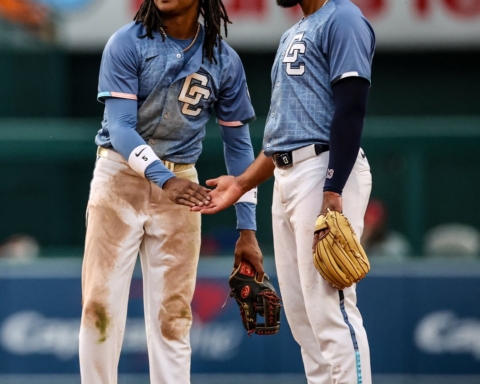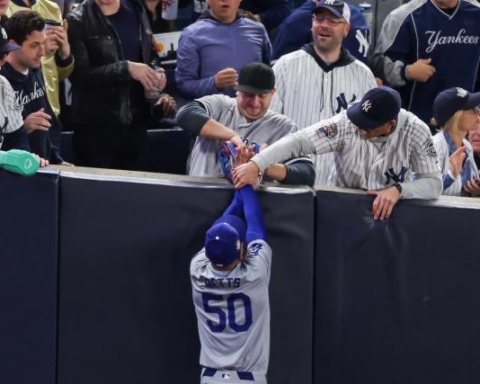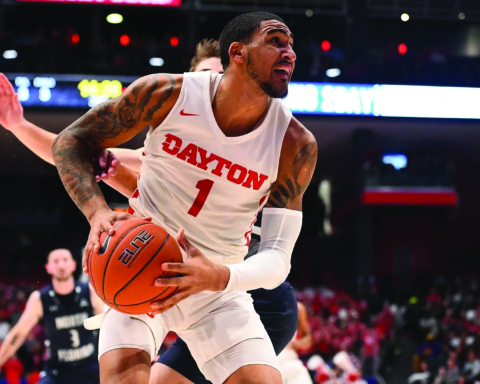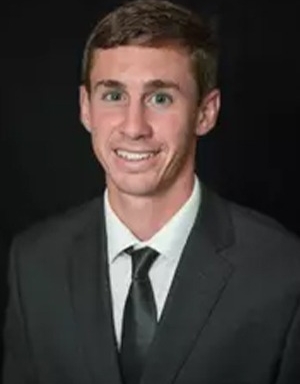“Holy s***,” I thought to myself as I walked through the media entrance at Miller Park, the home of the Milwaukee Brewers. The fact that I was about to cover a Major League Baseball game was scary, exciting and dreamy. What in the hell was Mike Hogan, a 20-year-old journalism major at St. Bonaventure University, doing in the press box with writers from The Athletic, USA Today and many more publications?
Walking through the belly of Miller Park, I saw what truly happens behind the scenes before an MLB game in the heat of June before getting into a jammed-packed elevator that would take me to the press box.
“Wack,” was the sound of Christian Yelich, former MVP, hitting in an indoor batting-cage behind the Brewers’ locker room.
“Pop,” was the sound of a pitcher warming up to the sounds of ACDC’s “Hells Bells.”
The sounds of professional baseball were so close, so real and so natural. This was as close as one could get to America’s pastime.
“Ding,” the sound of the elevator. Wearing my MLB-issued credential, I walked into the press box (four hours early).
There, I was greeted with official MLB game notes, write-ups, more statistics than I could consume, scouting reports, player profiles, lineup cards, score cards and much, much more. I took all of it and read all of it. Of course, I saved all of it, too.
After drowning myself with baseball knowledge, I milled around the press box. Mr. Baseball, Bob Uecker, legendary radio play-by-play broadcaster, held court near the media buffet. Admittedly, I ease dropped on his stories. Who wouldn’t?
Writers talked to other writers about baseball, players and teams. With trade season nearing, the rumors and gossip were aplenty. Coincidentally, my first night of work was the same night the Chicago Cubs, just 90-minutes south, signed once-dominant relief pitcher Craig Kimbrel.
Television broadcasters, from both Milwaukee and Pittsburgh, recorded opening segments in their booths. Producers, cameramen and technicians scrambled, aiming for perfection.
First pitch arrived, and the game began. Not only was it important for me to observe what happened on the field, coaching decisions and everything else within the game, but it was important to pay attention to what other journalists were doing around me.
Every aspiring sports journalist thinks they know how to cover games, myself included. And there are many different methods in doing so. But professionals know best. Of course, I took notes.
Throughout the game, writers and broadcasters took through notes, made observations of trends, sifted through statistics, closely looked at match-ups and paid attention to games within the game, among many other things. Covering a game was no longer showing up, watching the game with great seats and going to press post-game interviews. Being involved and active during the game was the key. That’s how questions and stories come to life.
If there’s one thing I learned: don’t miss anything. Soak every ounce of the game in.
After the last pitch, everyone, at once, raced for the elevator. Field level, where the night began, was the destination.
The first assignment I was given: go into the Pittsburgh Pirates locker room for manager and player interviews.
All afternoon, I thought about the chance to ask a big-league question to longtime, legendary manager Clint Hurdle, who just finished his final season as Pittsburgh’s manager. The thought alone scared the holy christ out of me. But when was this opportunity ever going to present itself again? I made up my mind in the seventh inning. I was going to do it, and do it with confidence.
“COACH, you guys were able to chase Zach Davies after five innings today, after facing him last weekend. What changes did your hitters make this time around?” I asked.
“I think his command was problematic for him as well,” Hurdle said. “He was able to push through five and keep us off the plate. We put a lot of good looks on him to string some things out. But I don’t think people give enough credit. He pitched into the ninth inning last time out, and to comeback that quickly and face the same team, that’s hard. Maybe we had better looks, maybe his stuff wasn’t as sharp. Maybe it was both. But he found a way to get through five.”
He said, “He’s 7-0 now, right?”
Immediately after leaving Hurdle’s office, Dejan Kovacevic, a columnist, tapped me on the shoulder and pulled me aside.
As a lifelong baseball junkie, I knew this, and didn’t even notice the mistake I had made.
“In baseball, kid, it’s manager. Not a coach. Remember that next time,” Kovacevic said.
We shook hands and went separate ways. I had to send audio clips in to the Brewers’ postgame show. He had a column, a game story and more to do.
But I walked away with much more than completing the task that had to be done that evening.
Twice this summer, I had the opportunity to sit in a press box for nine innings, go to interviews with MLB managers and players and more. Miller Park, for two days in June, was my classroom. A classroom where I learned more about sports journalism, unwritten rules and how stressful deadline is than I could ever imagine. A classroom that I’ve always wanted to sit in.
Most of us will be applying to internships soon enough. Keep this in mind: Learn. Screw up. Observe. Soak it all in. Make your internships more of a learning opportunity than they are supposed to be.
By Mike Hogan, Managing Editor
hoganm17@bonaventure.edu








